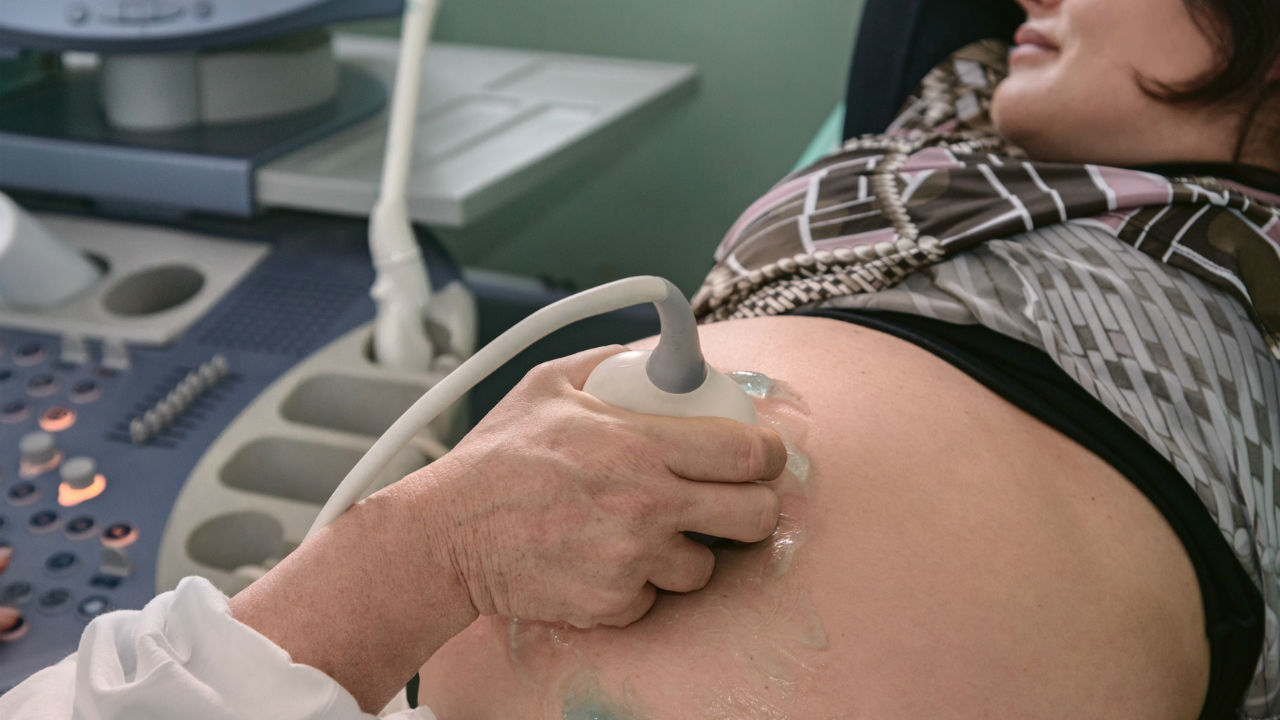Dr. Marlin Mills explains how preeclampsia is diagnosed. Dr. Mills in an experienced high-risk pregnancy physician who is on staff at Banner Desert Medical Center in Mesa, Arizona.
Dr. Mills:
The way we diagnose preeclampsia is first, look at the degree of swelling, or edema, that mothers are having and sometimes this is best established by looking at the degree of weight gain. Generally about a pound a week in the latter part of the pregnancy is what we usually see. If we have someone accumulating enough fluid to be gaining a pound or two every day or two, that would be more than we would expect.
The next feature would be high blood pressure, or hypertension. We’d look at generally a blood pressure over 140/90, usually repeated several times so that it was consistent. This can be difficult because patients can come to an office, be alarmed by the white coat or affected by the white coat and so the pressures can be up, so it’s something you want to measure over time.
And then the third component of preeclampsia that’s essential is we look at the amount of protein that is spilled or lost in the urine. The preeclampsia does affect the kidneys in a way that protein loss becomes greater than normal. Normally in pregnancy the kidneys lose a little more protein than in someone who is not pregnant. So there is a threshold that if we exceed that we know the patient’s kidney function is not normal.
Preeclampsia also can be categorized as mild preeclampsia or severe preeclampsia and when looking at diagnosing those two conditions or those two levels of the degree of preeclampsia we look at the features of the degree of hypertension as one. So a patient who has blood pressures, the systolic or the higher number over 160, or the diastolic, the bottom number, over 105 to 110 would be considered to have severe preeclampsia.
The symptoms we mentioned earlier if they have severe headache, severe visions changes, severe abdominal pain related to the liver swelling, those would all be features of severe preeclampsia and then the amount of protein lost in the urine, if it is over as much as 5 grams in the 24-hour urine would also be considered a component of severe preeclampsia.
There are other tests that we would do to look at again the degree of how preeclampsia affects other organ systems. Another condition that has been described that would equate to a severe form of preeclampsia is something called HELLP syndrome. HELLP syndrome stands for hemolysis, elevated liver enzymes or liver transaminases and low platelets. The way preeclampsia can affect the organ system is to cause each of those components to occur.
Women with HELLP syndrome tend to have a more severe course of preeclampsia, tends to affect the baby to a greater degree, often tends to occur earlier in the pregnancy and often the need to treat definitely, which would be by delivery, needs to occur more promptly in this situation as opposed to someone with mild preeclampsia.
It means that the diagnosis of preeclampsia, when looking at first identifying does preeclampsia exist, really depends on evaluating the degree of weight gain or edema, the level of hypertension or elevated blood pressure and the degree of protein loss in the urine.
Once that diagnosis has been made then additional studies can be done to determine how the preeclampsia is affecting other organ systems like the liver, the kidney, components of the blood such as causing hemolytic anemia or very low platelet count.
How preeclampsia affects those other organ systems to cause temporary dysfunction and damage to those systems will often determine how aggressive the therapy or the treatment needs to be.
About Dr. Marlin D. Mills, M.D.:
Marlin D. Mills, MD, is board-certified in Obstetrics and Gynecology, and is on staff at Banner Desert Medical Center. A former medical director for the hospital, Dr. Mills provides yearly educational programming to the nurse staff on high-risk obstetrics—new ideas and options. Dr. Mills received his medical degree at Universidad Autonoma de Guadalajara Medical School in Mexico. He completed his Obstetrics and Gynecology residency at Valley Medical Center in Fresno, Calif., and his Maternal-Fetal Medicine fellowship training at University of California Irvine Medical Center, Long Beach, Calif.
Click Here For More Information On High-Risk Pregnancy
Click Here For More Information On Multiple Births
Keywords:
Condition: Preeclampsia, Pregnancy, High-Risk Pregnancy
Related Terms: Cesarean Section, C-Section, Vaginal Birth, Elective C-Section, Emergency C-Section, Labor, Umbilical Cord Prolapse, Preeclampsia, Toxemia
Health Care Provider: Banner Hospital, Banner Medical Center, Banner Health, Banner Desert Medical Center, Banner Desert Hospital, Maternity Services at Banner Desert Medical Center
Location: Mesa, Arizona, AZ, 85202, East Valley, Tempe, Chandler, Gilbert, Apache Junction, Phoenix, Maricopa County, Guadalupe, Phoenix Metropolitan Area
Expert: Dr. Marlin D. Mills, Marlin Mills, M.D, Doctor Mills, Obstetrician Marlin Mills, High-Risk Pregnancy Expert Marlin Mills, Marlin Mills, OB/GYN
Expertise: High-Risk Pregnancy, Cesarean Section, C-Section, Obstetrics and Gynecology, Maternal Fetal Medicine, Prenatal Education, Perinatal Care, Birthing Services, Fetal Assessment, Breastfeeding Support, Fetal Therapy, Fetal Intervention, Premature Babies, Preeclampsia, Phoenix Perinatal Associates, High-Risk Obstetrics, Fetal Physiology, Perinatal Grief


















